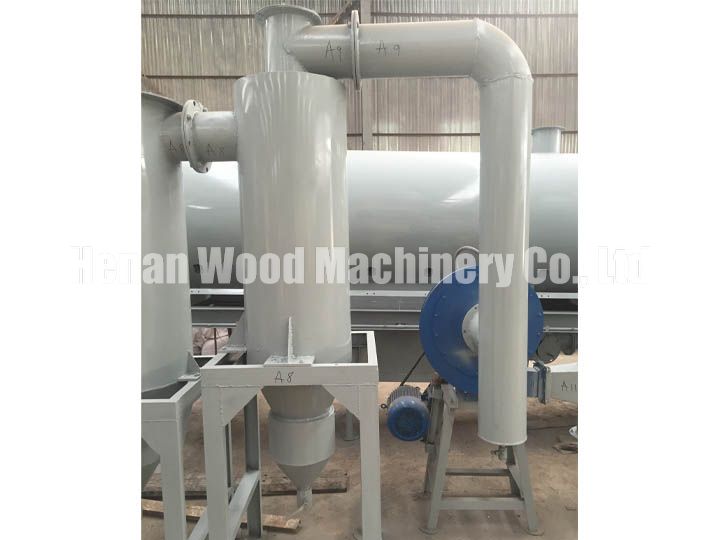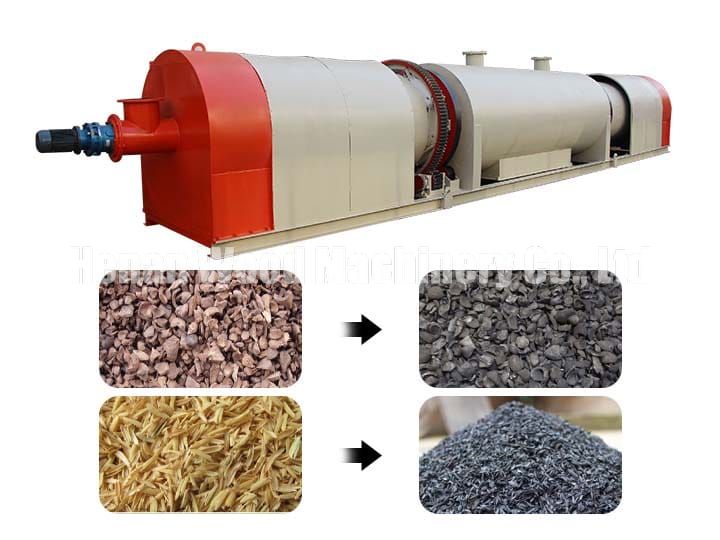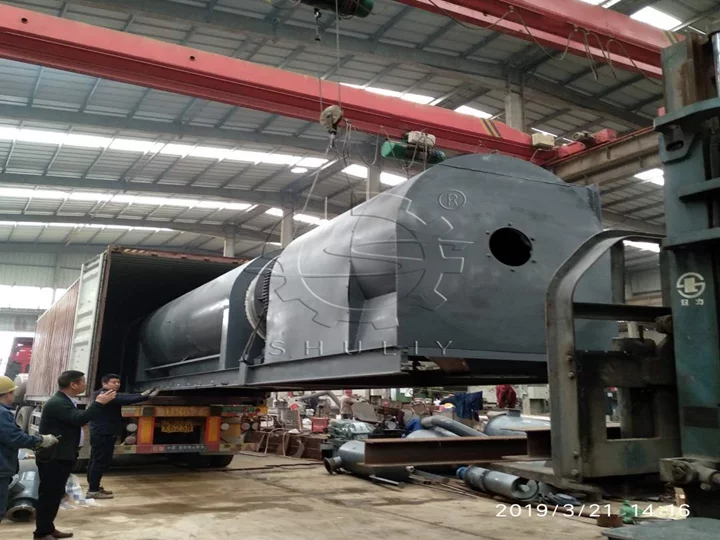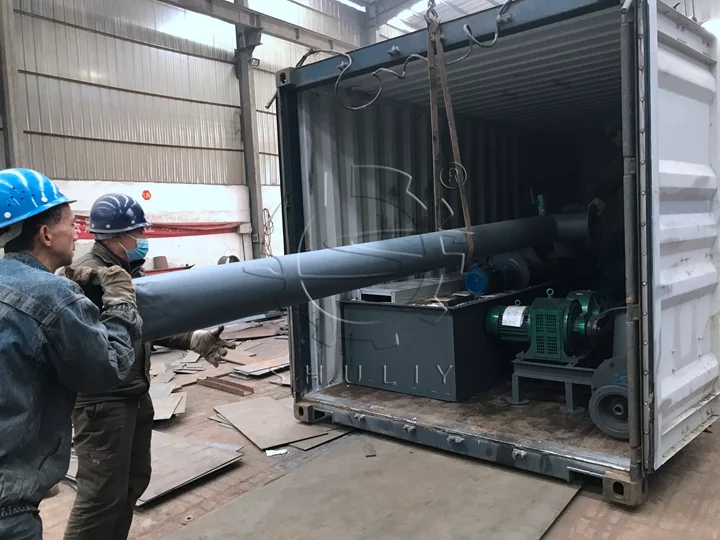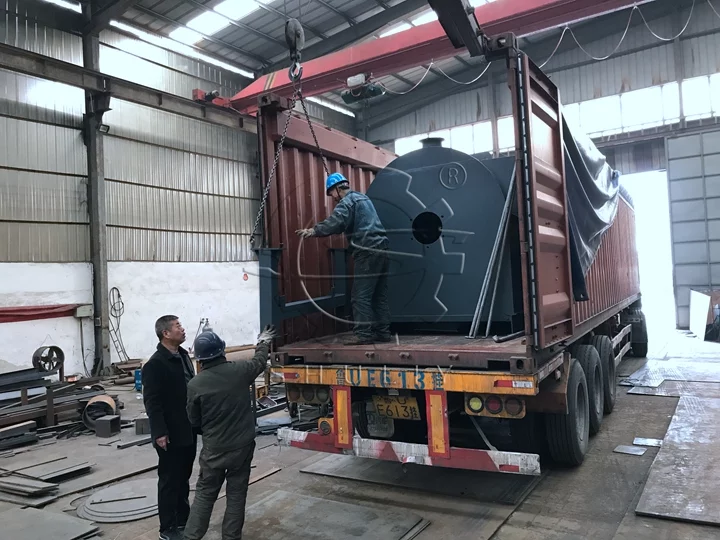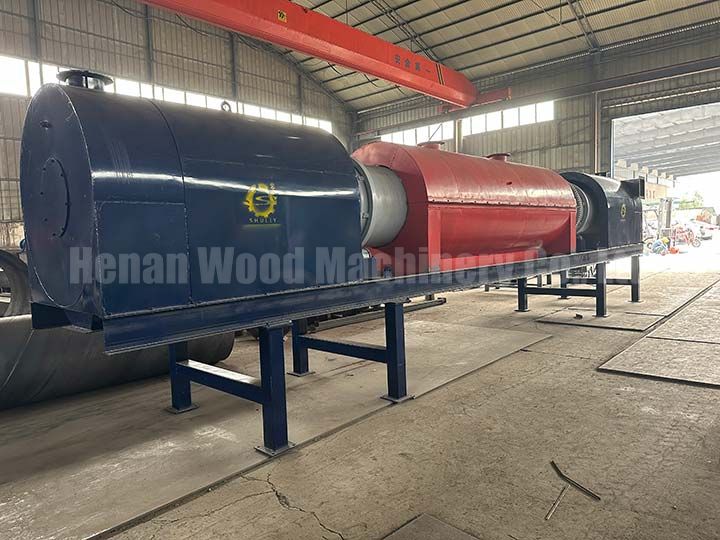Four de carbonisation continue
| Modèle | WD-CF1200 |
| Diamètre (mm) | 1200 |
| Capacité (kg/h) | 1200-1500 |
| Puissance principale (kw) | 20 |
| Température de carbonisation (℃) | 500-800 |
| Puissance du ventilateur (kw) | 5.5 |
Le four de carbonisation continue est idéal pour traiter divers matériaux de biomasse tels que les copeaux de bois, les balles de riz et les balles de palmier. Avec une capacité de 1 200 à 1 500 kg/h, cette machine prend en charge une alimentation continue, permettant une carbonisation ininterrompue et efficace.
Le système comprend une carbonisation en couches, un contrôle intelligent et une collecte automatisée de sous-produits comme le goudron et les gaz combustibles. Il répond efficacement aux défis des méthodes traditionnelles de carbonisation : améliorer l'efficacité de la production, réduire l'intensité du travail et promouvoir l'utilisation durable des ressources renouvelables.
Matières premières du four de carbonisation continue
Pour le four de carbonisation continue, les exigences en matière de matériaux diffèrent de celles traitées par le four à levage et les fours de carbonisation horizontaux. Ce four est conçu pour traiter des matériaux plus doux et plus petits, qui doivent répondre à des critères spécifiques pour une carbonisation efficace.

Taille des matériaux. Tous les matériaux doivent être petits et fins, d'une taille inférieure à 10 centimètres.
Matériaux appropriés. Le four de carbonisation continue peut traiter une variété de matériaux contenant du carbone, y compris :
- coquilles d'arachide
- matière végétale
- aboyer
- paille
- coquilles de noix
- coquilles de noix de coco
- coquilles de palmier
- sciure
Les matières premières pour le four de carbonisation continue devraient idéalement avoir une teneur en humidité inférieure à 20 %. Si les matériaux dépassent cette limite, ils doivent être pré-séchés à l'aide d'un sèche-rotative à biomasse pour atteindre des niveaux d'humidité optimaux.
À l’intérieur du four de carbonisation, des processus de distillation sèche à haute température et de carbonisation anaérobie ont lieu, garantissant un taux de carbonisation élevé. Ce four est un excellent choix pour les usines de transformation du charbon de bois, offrant une production de charbon de bois efficace et de haute qualité.
Structure du four de carbonisation continue
Le four de carbonisation continue est composé de plusieurs composants clés : des systèmes d'alimentation en spirale et plats, le corps principal du four, l'unité de décharge par condensation, la tête de flamme, la piscine de combustion, l'équipement de purification et l'armoire de distribution d'énergie.
Pendant le fonctionnement, le matériau passe séquentiellement à travers une zone de préchauffage, une zone de carbonisation à haute température et une zone de refroidissement pour terminer efficacement le processus de carbonisation.
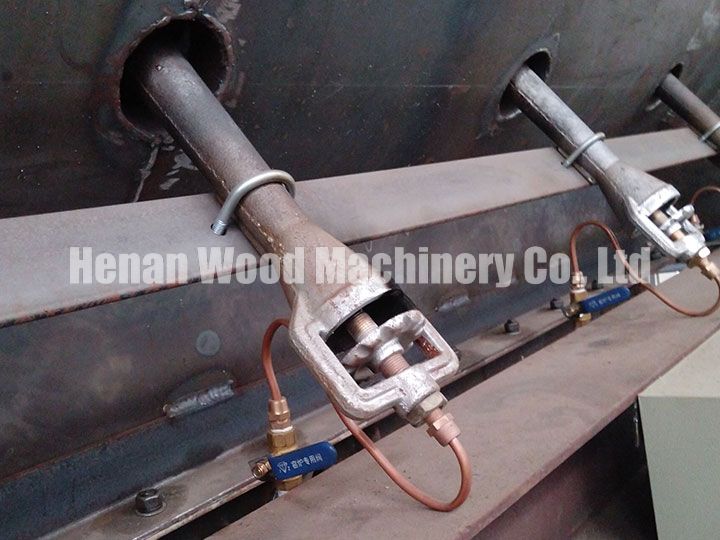
Tête d'allumage de la piscine en feu
- Le modèle WD-CF1200 dispose d'un total de 18 dispositifs d'allumage.
- Le modèle WD-CF1200 dispose d'un total de 16 dispositifs d'allumage.
- Ces dispositifs d'allumage sont utilisés lors du choix du GPL comme source de chaleur pour la machine.
Piscine brûlante de la machine de fabrication de charbon de bois de sciure
- Le bassin de combustion de la machine à fabriquer du charbon de bois est une zone de combustion contrôlée.
- Il génère la chaleur nécessaire pour piloter efficacement le processus de carbonisation.
- Cela permet de maintenir des conditions de température élevée constantes dans tout le four.
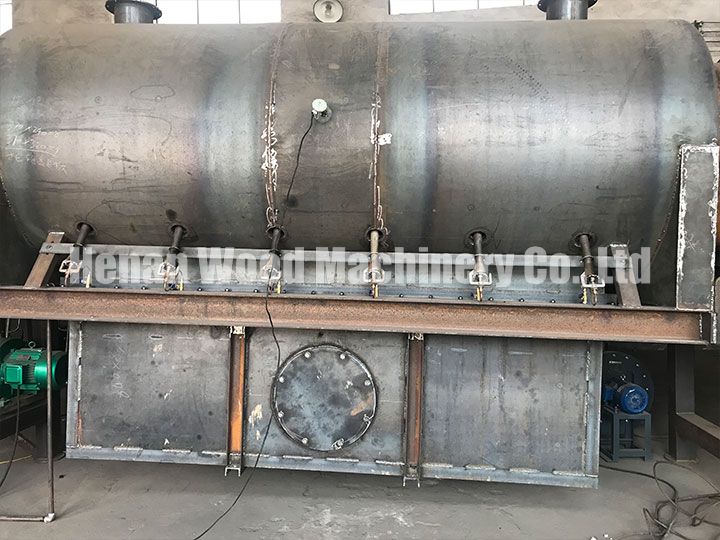
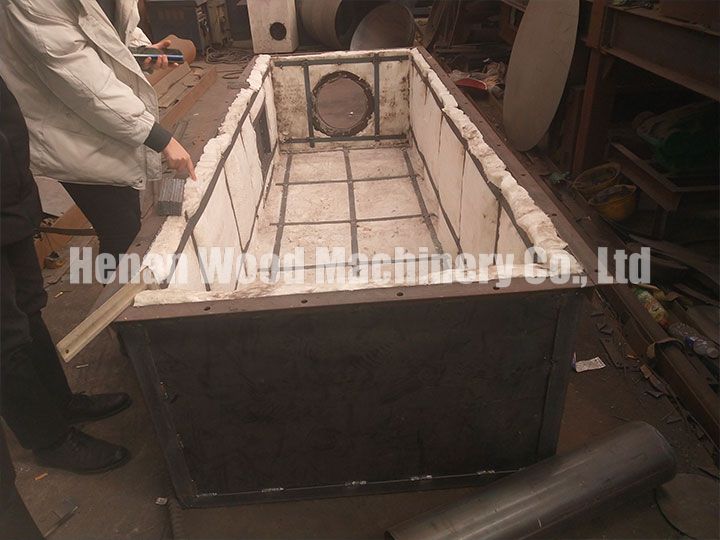
Structure intérieure de la piscine brûlante
- La piscine de combustion est fabriquée en acier Q235 de 4 mm d'épaisseur pour plus de durabilité.
- Il est isolé avec une couche de 5 cm de laine de roche haute température, assurant une excellente rétention de la chaleur.
- La laine de roche est plus légère que les briques réfractaires traditionnelles, ce qui facilite son transport.
- La laine de roche offre une isolation thermique supérieure par rapport aux matériaux conventionnels.
Intérieur de la laine minérale du four de carbonisation
- Construit avec une plaque d'acier inoxydable 310s et de la laine de roche pour une durabilité accrue.
- Fournit une meilleure étanchéité, réduisant les pertes de chaleur.
- Assure une conservation efficace de la chaleur dans la chambre de carbonisation.
- Maintient des températures optimales dans la zone de carbonisation, favorisant des résultats cohérents.
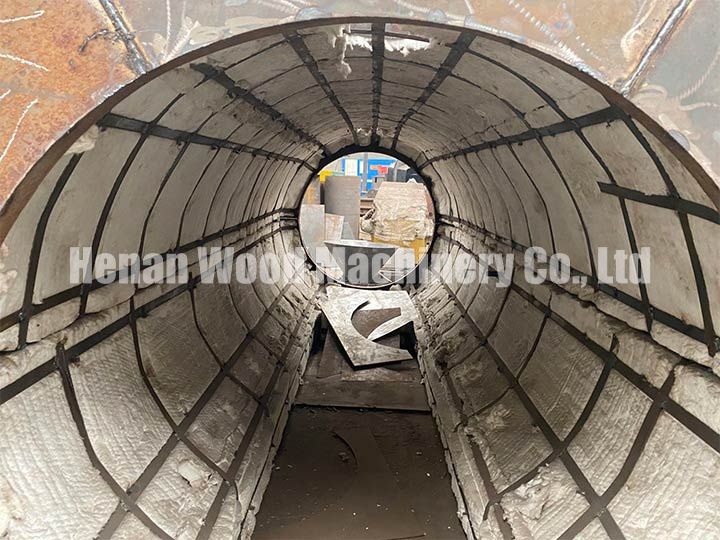
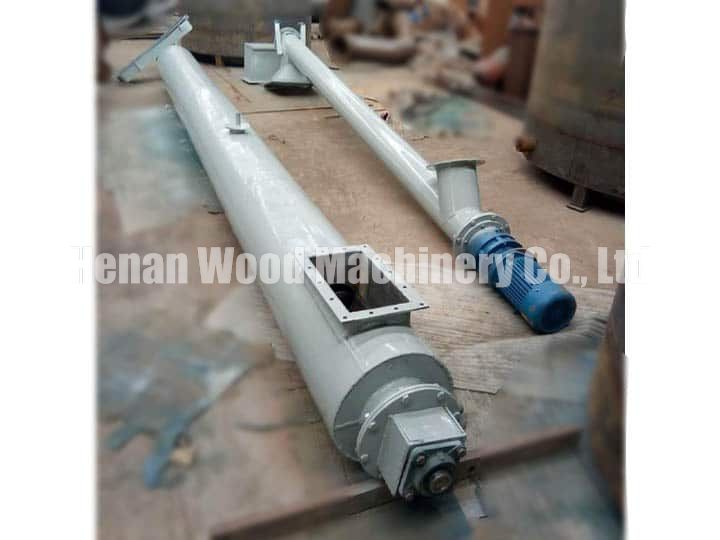
Alimentateur à vis et dispositif de décharge de refroidissement
- Le dispositif d'évacuation du refroidissement peut être connecté soit à une pompe à eau, soit à une conduite d'eau.
- Il refroidit le charbon de bois à haute température pour éviter une combustion spontanée lors de la décharge du matériau.
Structure intérieure du convoyeur à vis
- La structure intérieure du convoyeur à vis est constituée d’une lame à vis rotative.
- La lame de vis est logée dans un tube cylindrique.
- Cette conception transporte efficacement les matériaux grâce à un mouvement mécanique.
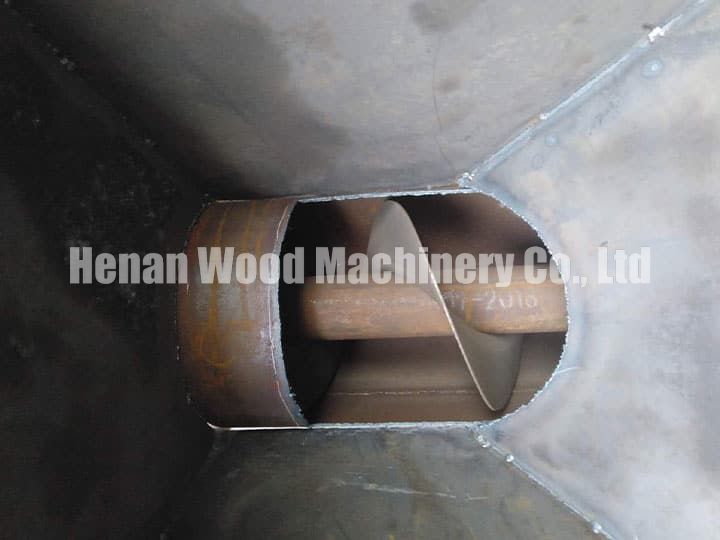
Comment carboniser la balle de riz dans un four de carbonisation continue ?
Pour carboniser la balle de riz dans un four de carbonisation continue, suivez ces étapes :
Préchauffage et allumage
- Utilisez du gaz de pétrole liquéfié (GPL) pour allumer la machine.
- Préchauffez le four pendant environ 1 heure. Environ 20 à 30 kg de GPL sont nécessaires à l'allumage, et il suffit de l'allumer une seule fois.
- Le préchauffage est terminé lorsque la température atteint entre 280°-330°C.
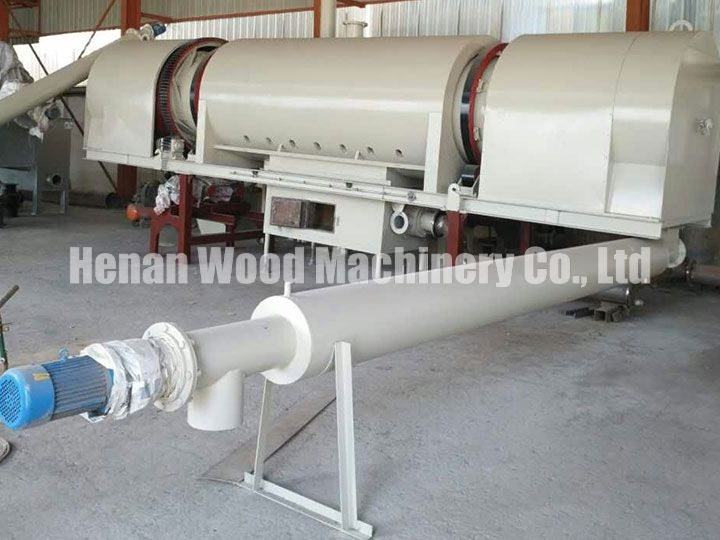
Processus de carbonisation
- Une fois la température de préchauffage atteinte, commencez à ajouter des matières premières, telles que la balle de riz, dans le four.
- Pour la balle de riz, le matériau peut être déchargé une fois que le four atteint une température de 280°C.
- Allumez la chambre de combustion et après 10 à 20 minutes de carbonisation, observez si des gaz chauds sont générés dans la piscine de combustion.
- Si un gaz inflammable est produit, allumez le gaz pour le brûler dans la chambre de combustion.
- Une fois le processus de combustion démarré, éteignez le brûleur GPL.
Cycle et refroidissement
- Un cycle de carbonisation prend environ 20 minutes, après quoi le matériau peut être retiré et remplacé par une matière première fraîche pour un nouveau cycle.
- Un refroidissement est nécessaire lors du déchargement du matériau. Le four dispose d'un condenseur à double couche, qui est rempli d'eau en circulation pour refroidir la matière première carbonisée avant sa décharge.
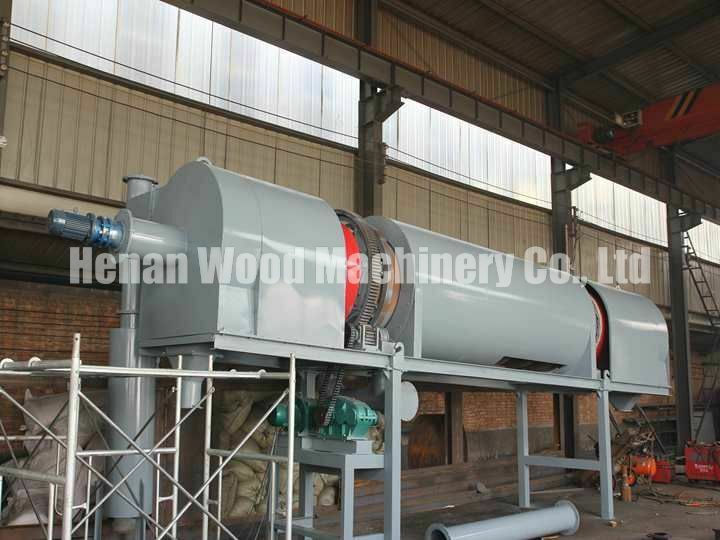
Paramètres du four de carbonisation continue
| Modèle | WD-CF800 | WD-CF1000 | WD-CF1200 |
| Diamètre (mm) | 800 | 1000 | 1200 |
| Capacité (kg/h) | 400-600 | 800-1000 | 1200-1500 |
| Puissance principale (kw) | 18.5 | 18.5 | 20 |
| Température de carbonisation (℃) | 500-800 | 500-800 | 500-800 |
| Puissance du ventilateur (kw) | 5.5 | 5.5 | 5.5 |
Le four de carbonisation continue est nommé en fonction du diamètre du four, avec des diamètres plus grands permettant le traitement d'un plus grand nombre de matières premières.
Parmi les différents modèles disponibles, le modèle WD-CF1000 se distingue par sa puissance et son prix équilibrés, ce qui en fait un choix populaire parmi les clients.
Sa taille modérée offre une solution optimale pour ceux qui recherchent une carbonisation efficace sans les coûts plus élevés associés aux modèles plus grands.
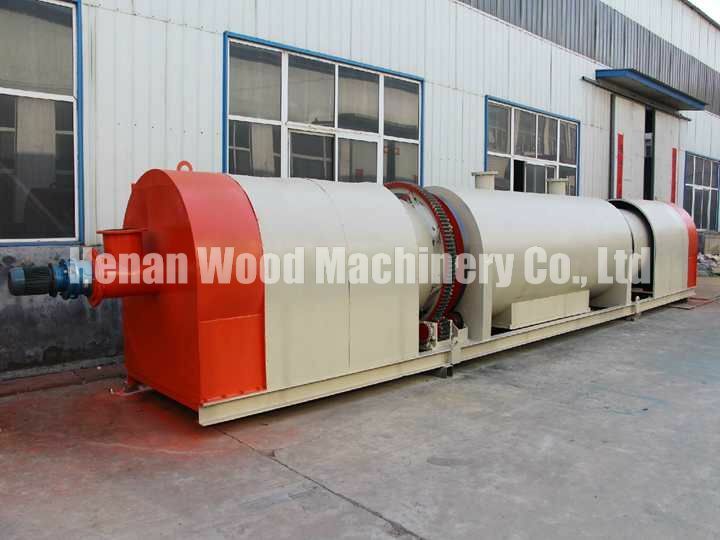
Caractéristiques du four de carbonisation continue
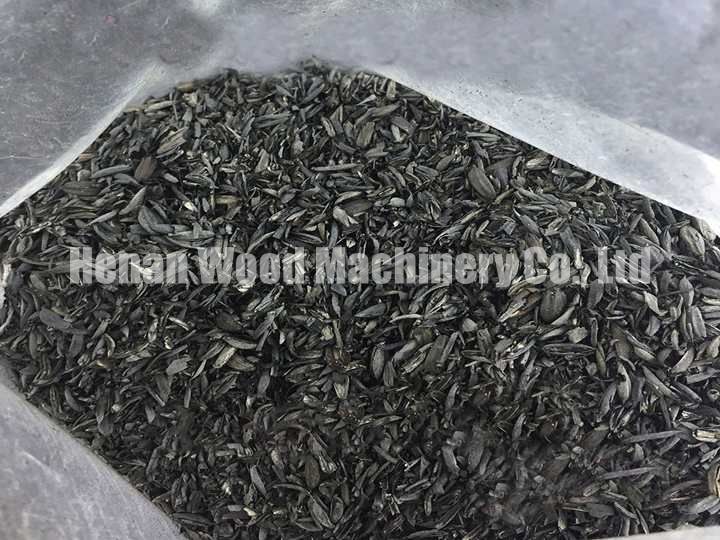
- Alimentation continue
- Le four permet un approvisionnement continu, la carbonisation et le déchargement, améliorant considérablement l'efficacité par rapport aux équipements traditionnels par lots.
- Haute automatisation
- Avec un système de contrôle intelligent, il réduit le travail manuel et remplace le travail manuel par un processus automatisé plus efficace.
- Conception écologique
- Utilise des combustibles propres et un système avancé d'élimination des fumées pour prévenir la pollution et soutenir une production durable à faible émission de carbone.
- Collecte automatique des sous-produits
- Collecte efficacement le goudron, le vinaigre de bois et le gaz pendant la carbonisation pour une utilisation complète des énergies renouvelables.
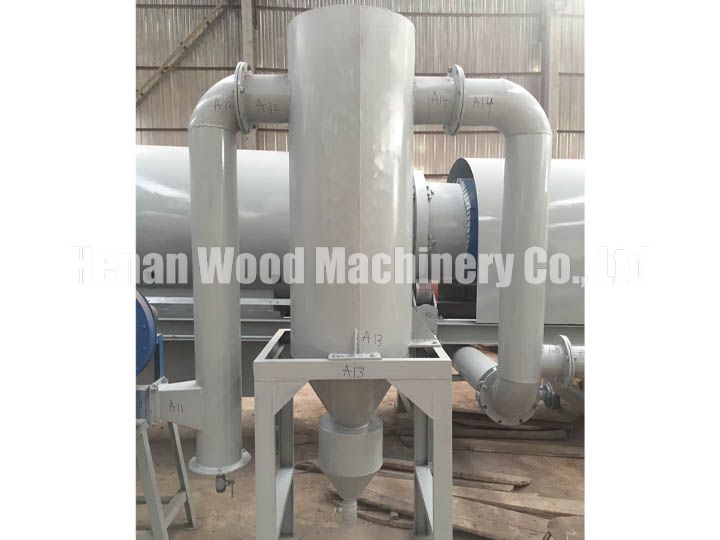
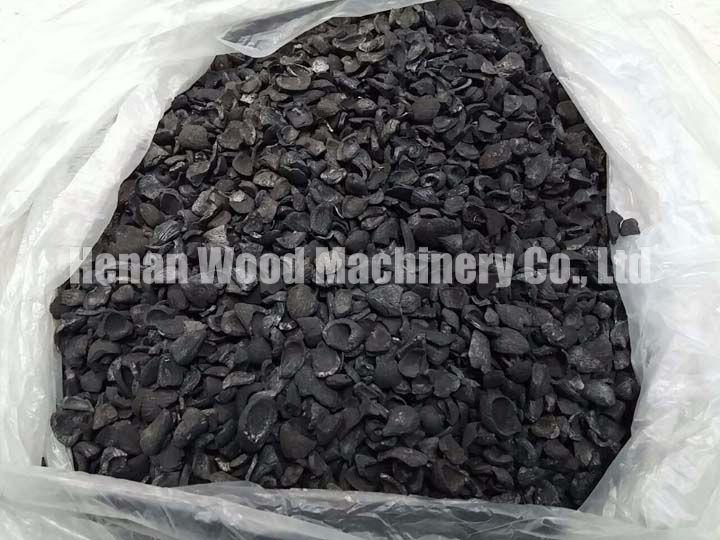
- Sortie de haute qualité
- Le charbon est non toxique, inodore, avec une teneur en humidité inférieure à 5 %, et brûle plus longtemps—idéal comme combustible propre et efficace.
FAQ du four de carbonisation continue
Quelle est la source de chauffage de la machine à charbon de bois de sciure ?
Le four de carbonisation continue utilise du gaz de pétrole liquéfié (GPL) comme source de chaleur initiale, consommant généralement seulement 15–20 kg par cycle. Après avoir fonctionné pendant 1 à 1,5 heure, il commence à produire du gaz combustible, qui peut ensuite être utilisé pour maintenir le fonctionnement en cours—éliminant le besoin de GPL supplémentaire. Cela fait du GPL un choix recommandé pour obtenir à la fois l'efficacité énergétique et des économies de coûts.
Le matériau qui peut être carbonisé par le four de carbonisation est-il uniquement des matières premières de biomasse ?
Au-delà de la biomasse, le four de carbonisation continue peut également traiter divers matériaux tels que papier d'aluminium, canettes, déchets ménagers, plastiques et déchets électroniques. Pour de meilleures performances, la taille des matériaux doit être maintenue dans 10 centimètres pour assurer une carbonisation efficace.
Quels sont les avantages de notre four de carbonisation continue par rapport aux autres fabricants ?
Notre four présente une chambre de combustion plus grande, une construction en acier inoxydable et un allumage électrique automatique. Il utilise un ventilateur en acier inoxydable refroidi par eau et un système de combustion directe sans goudron pour une efficacité supérieure et un fonctionnement plus propre.
De quel espace ai-je besoin pour utiliser un four de carbonisation continue ?
Chaque unité nécessite un espace de 250–300 mètres carrés, avec une largeur minimale de 10 mètres et une longueur de 22 mètres. L'exploitation d'une machine nécessite une équipe de trois travailleurs.
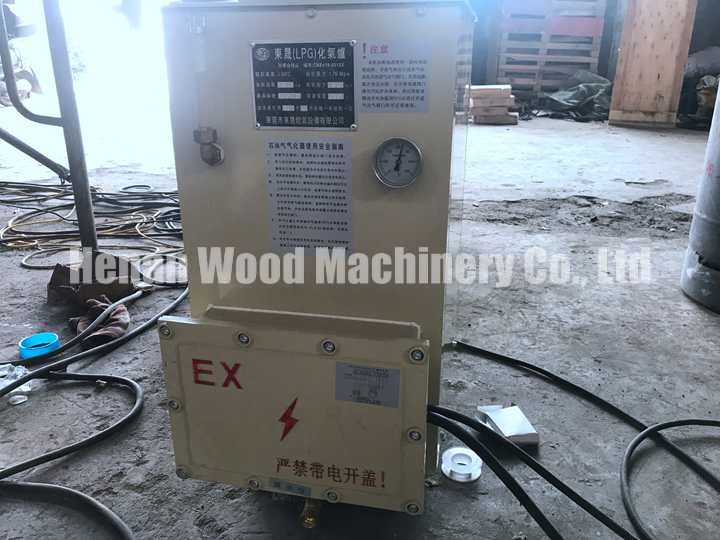
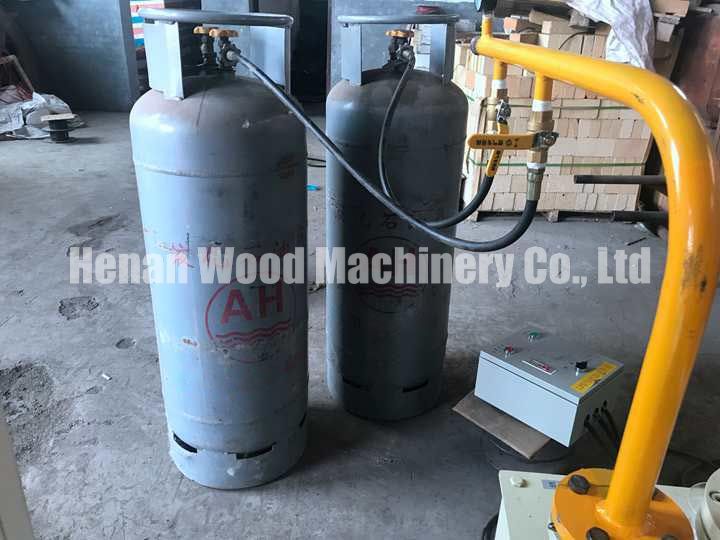
Comment produire des briquettes de charbon de bois ?
Le charbon carbonisé peut être moulu en poudre de charbon, puis mélangé avec une certaine proportion de liant. La machine Shuliy fournit divers équipements pour fabriquer du charbon sous différentes formes.
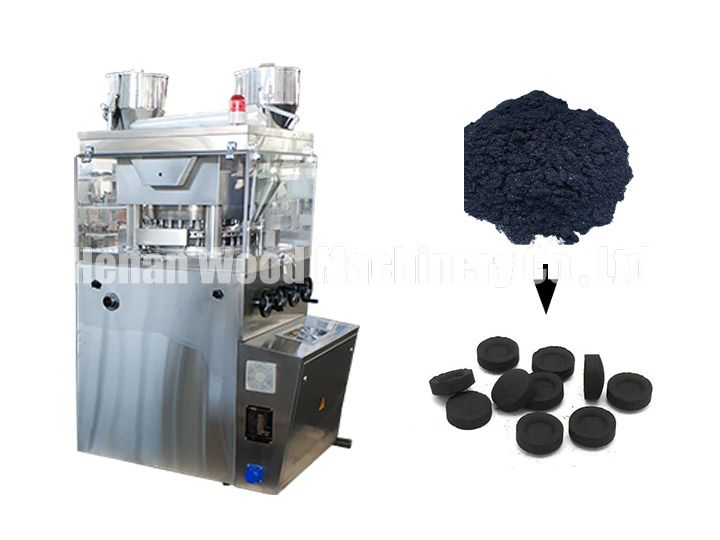
Utilisation de machine à charbon shisha pour fabriquer du charbon shisha carré et rond. La taille, le motif et la forme du charbon à narguilé peuvent tous être personnalisés.
Cette machine à briquettes de charbon en nid d'abeille peut extruder de la poudre de charbon en briques en nid d'abeille ou en charbon.
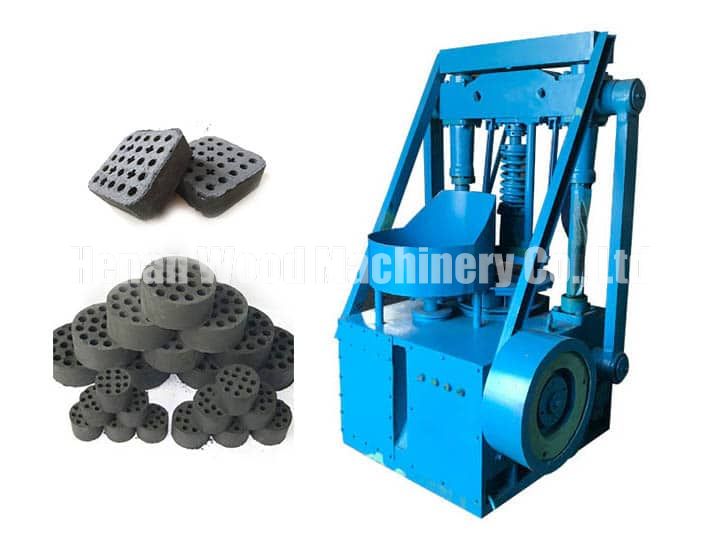
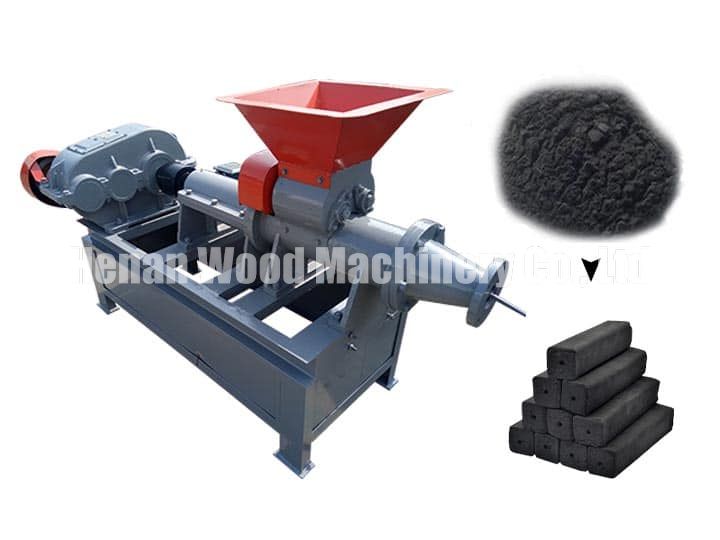
La machine à extruder du charbon transforme la poudre de charbon en bâtons longs réguliers, qui peuvent être utilisés comme combustible de chauffage.
La machine à briquettes de charbon BBQ peut être utilisée pour extruder de la poudre de charbon en briquettes de charbon sphériques, carrées ou en forme d'oreiller.
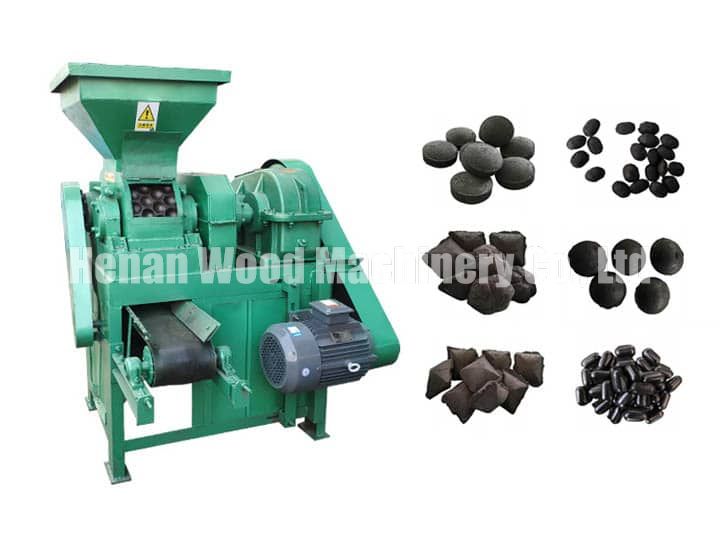
Chargement et livraison de la machine de fabrication de charbon de bois de sciure
Un client au Ghana a passé une commande pour un four de carbonisation continue WD-CF1000 d'une capacité de production de 800 à 1 000 kg/h auprès de notre usine de machines à charbon.
Face à une demande croissante de charbon de bois pour barbecue sur le marché local, le client a cherché à investir dans un équipement de carbonisation professionnel pour soutenir le lancement de son activité de production et de vente de charbon de bois.
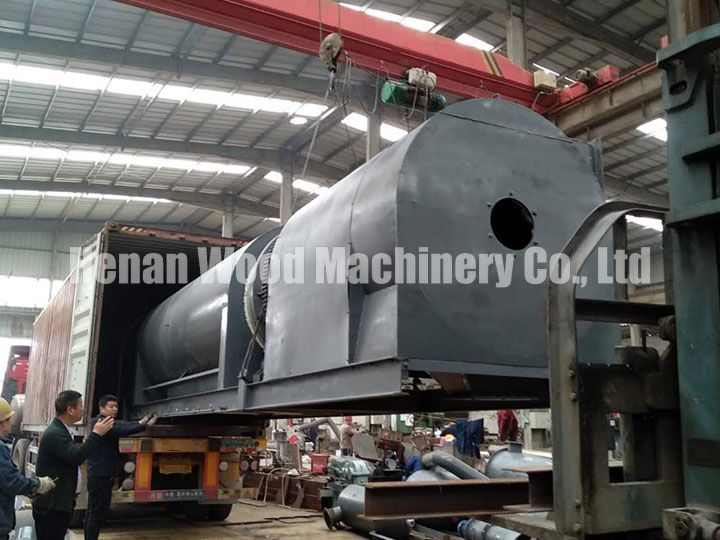
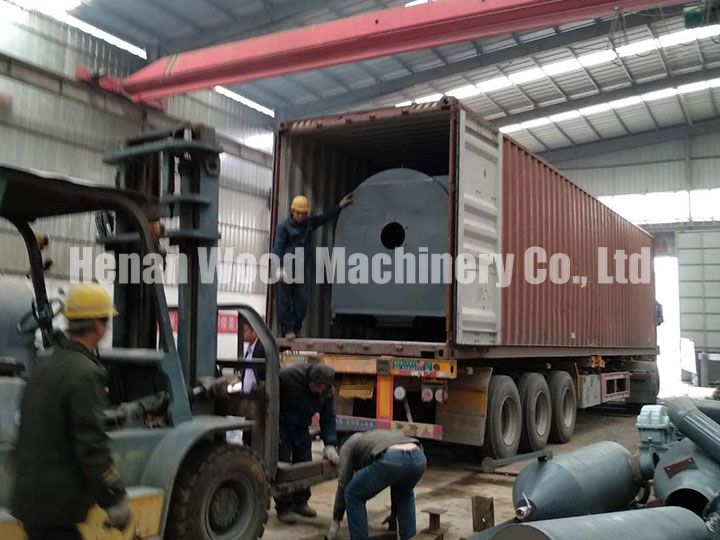
Conclusion
En conclusion, le four de carbonisation continue offre une solution avancée et efficace pour carboniser une large gamme de matériaux de biomasse. Grâce à son alimentation continue, son contrôle intelligent et sa collecte automatique des sous-produits, il augmente considérablement l'efficacité de la production tout en minimisant l'impact environnemental.
Que ce soit pour la production de charbon de bois, la production d'énergie ou l'utilisation durable des ressources, cette machine constitue un investissement fiable et rentable pour les entreprises cherchant à optimiser leurs processus de carbonisation et à contribuer à un avenir plus propre et plus vert.
